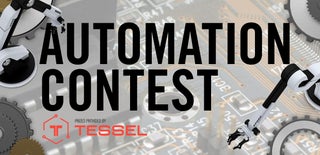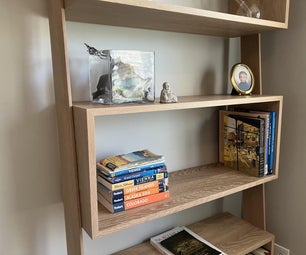Introduction: Solar Powered Air Conditioning Unit.
Most people would like to have their homes cooled by the strength of sunlight which ironically causes heat. How to achieve energy efficient cooling of your abode by harnessing sunlight?
I have successfully implemented a solar powered air conditioning unit for my living room which has been working great since June 2013 . Let me tell you how I have done it.
Notes to keep in mind:
What I have implemented is an off grid power system. My home generates its own power and can run without utility power. As a result my system is typically much more expensive than one that ties to the grid (feeds power back). I just prefer the option having of power should our utility fail or natural disaster strikes (such as hurricane or a drunk neighbor knocking over a utility line pole with a car).
I have fulfilled the electrical code requirements (NFPA 70, TTS-171 Part 1) and power utility mandates for my area. Grid tie or feeding power back to our utility is both not currently possible and highly illegal in my country (the death of a linesman occured due to a customer violation). This instructable is an overview of how I implemented my system and the cost absorbed by myself. If my implementation cannot meet your electrical code needs, utility mandates, budget constraints and design criteria then I cannot assist you on this. You need to conduct your necessary reseach for a safe design and I'm always happy to try my best in answering technical questions you may have.
I published an instructable on how I solar powered my home with design calculations.
https://www.instructables.com/id/Solar-Powering-My-Home/
Read on and I hope you can find it interesting.
Step 1: Solar Panels for Harvesting Sunlight.
Harvesting? Yes you read it right. Harvesting a renewable resource allows powering of my air conditioning unit and most of my household electrical loads.
An air conditioning unit uses lots of energy to remove heat from a room. To provide that energy you need enough solar panels installed properly to capture the radiant energy of the sun. When it comes to solar power - "the bigger, the better!".
I currently have eight 225watt panels on my roof, wired 4 in series and in parallel with the other string of 4. These give me the energy to power my lights, automation pc, refrigerator, dog feeder, WiFi, small appliances and of course that wonderful air conditioning unit.
Mounting can be with a roof rail kit or you can do your own custom mounts made with metal and/or rigid pvc.
Step 2: Solar Charge Controller.
For 1 kilowatt and higher you want a maximum power point tracking (MPPT) charge controller. Basically it gives higher efficiency, can accept a higher voltage to deliver the amps into the battery bank.
I use the outback flexmax 80amp mppt controller. It's the best in class for the industry and it's worth every cent of its cost. It's fully programmable and can handle up to a 60 volt Dc battery bank.
Notice the happy face I drew? Not even the evil scientist guy in despicable me would be as happy making his evil plans.
Step 3: The Battery Bank.
My battery of choice is the Lifepo4 chemistry. Long life, zero toxicity, enviromentally friendly, high energy density and best of all completely safe (won't blow up! Lol).
My system is 25.6v and uses 16 batteries in parallel.
I previously used lead acid batteries but they simply didn't last long. In 14 months their capacity was approximately 40% of their original. This was a costly mistake and I gave away these and made my Lifepo4 bank. They have been performing admirably and even though at higher upfront cost, the higher service life is well worth it. Please read my instructable for this bank.
https://www.instructables.com/id/Lifepo4-solar-stor...
Now for anyone doubting the capabilities of LifePO4 batteries, there are many good sources on the web detailing this chemistry. Also think about this: why dont your mobile devices use lead acid batteries? Hmm. Lithium is superior plus I even have a LifePO4 battery to start my car! Take a look.
https://www.instructables.com/id/Lifepo4-battery-fo...
Step 4: The Air Conditioning Unit.
The only option for solar powered air conditioning is to use an inverter air conditioning unit. This is the most energy efficient type in the industry and it is simply amazing. I actually gave away my original 18000btu unit to install a 10000btu inverter.
My inverter AC unit can use as little as 240Watts right up to its maximum rating. This unit runs off 240 volt so I needed a means to power it.
Step 5: Going From 25.6v Dc to 240v AC!
How to make this happen? Easy! I used a 1000watt inverter accepting 25.6v dc and outputting pure sine wave AC at 120v. Next I used a 1500watt autotransformer to boost the 120v to 240v. I included a thermal image of the transformer under load. Autotransformers have higher efficiency at the expense of no galvanic isolation once the voltage ratio is 3:1 or less. I could not obtain a 240volt inverter at a reasonable price at the time of the installation, perhaps in the future I will get rid of that, urgh, transformer.
Protection for my battery bank is provided by a mini circuit breaker 100amp.
Since my pure sine wave inverter can only deliver 1000Watts, the lowest temperature I can get to on battery power is 26C which is pretty good. If you can afford a bigger unit then all the more power to you!
Simple yea?
A side note: isn't it damn confusing reading about a pure sine wave AC inverter and also an inverter air conditioning unit? Don't blame me for that weird terminology.
Also if you don't know if your inverter is pure sine wave here are ways to find out:
1. It would be clearly labeled on its nameplate as pure sine wave output.
2. You can use an oscilloscope.
3. Plug a AC powered fan into the output and if it buzzes while operating then it is NOT a pure sine wave inverter.
4. If the advertised specs claim for example 1000Watt power and a surge rating of 2000Watt, then that inverter may not be pure sine wave. Pure sine wave inverters typically don't have a large surge rating (i.e. 2x its maximum continuous rating).
Step 6: Enjoying Green Energy Air Conditioning!
With the inverter on and the air conditioning unit powered, I enjoy comfortable air from my battery bank. I included a thermal image of the unit running off the batteries.
A special note here. This system I have described is part of a larger system for my home. My design was for an off grid system to deliver maximum reliability. The cost for all components is higher than a grid tie system. It has been my aim to introduce some basic design and implementation concepts to others so they may gain ideas for possible installations on their own. It's not the purpose of this instructable to mandate to anyone that this is the ONLY way solar powered air conditioning can be achieved. It's one way and I'm happy to have executed it.
Please note that with my setup I don't have a large enough battery bank to run the unit all night. Therefore I implemented an automatic transfer switch to power the unit from our utility when a low voltage dc threshold is reached.
The transfer switch is fully software controlled by my home automation pc. Take a look at the third and forth pics. The software was created from FLOWSTONE. Take a look at my home automation instructable.
https://www.instructables.com/id/Creating-a-home-automation-system/

Participated in the
Automation Contest













